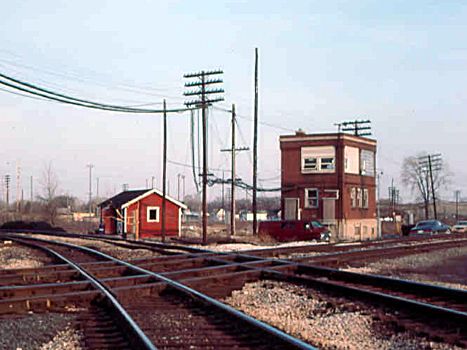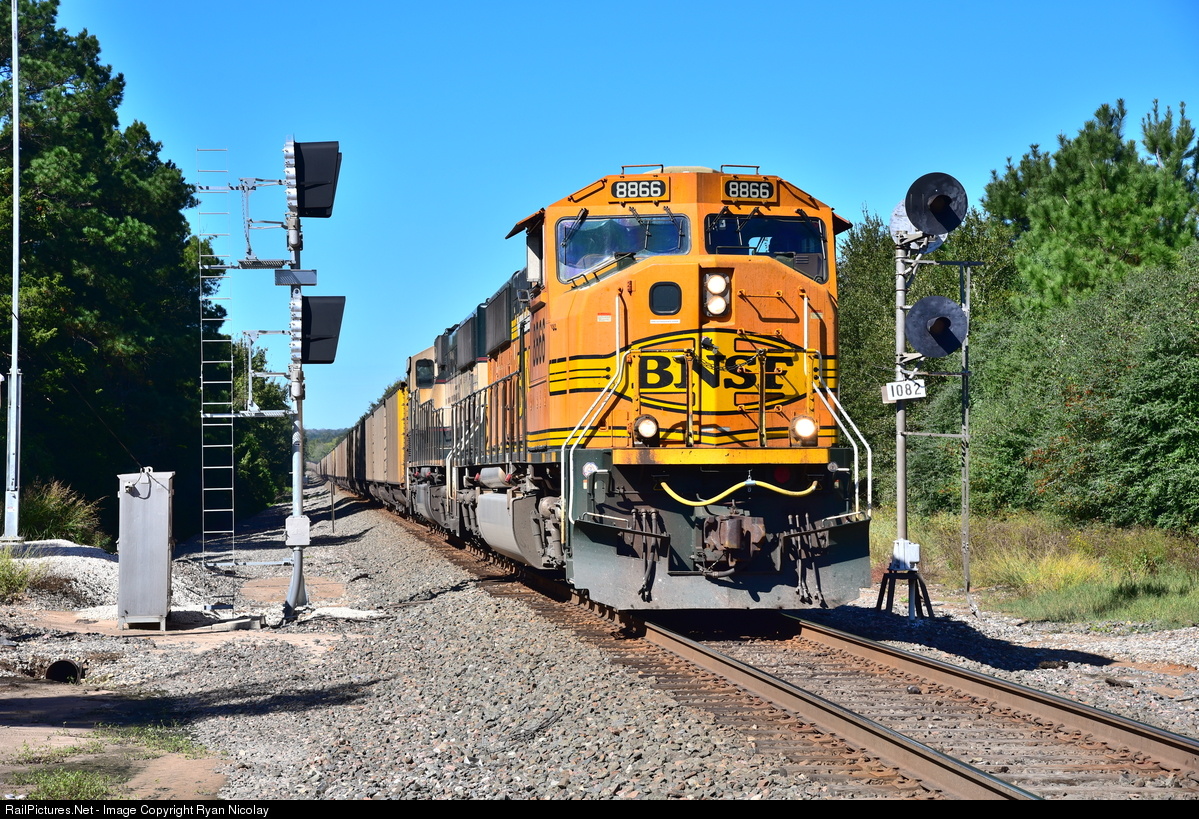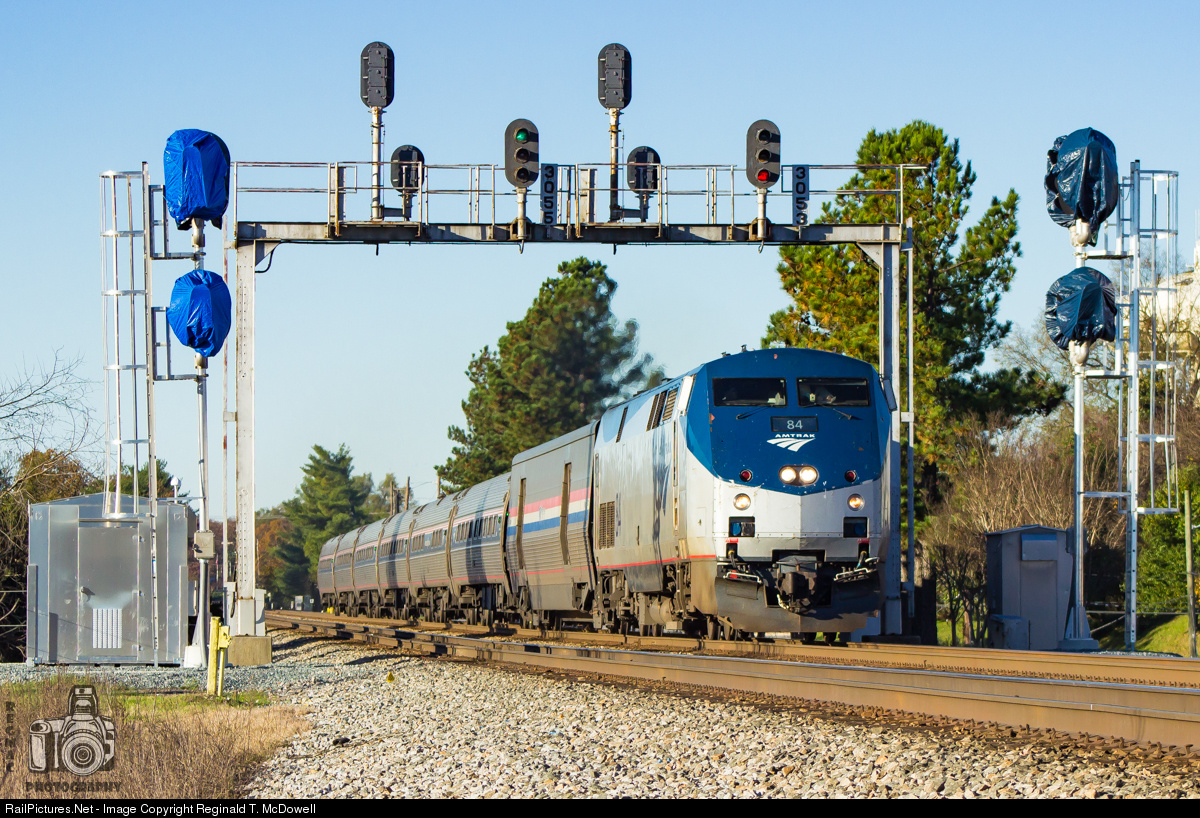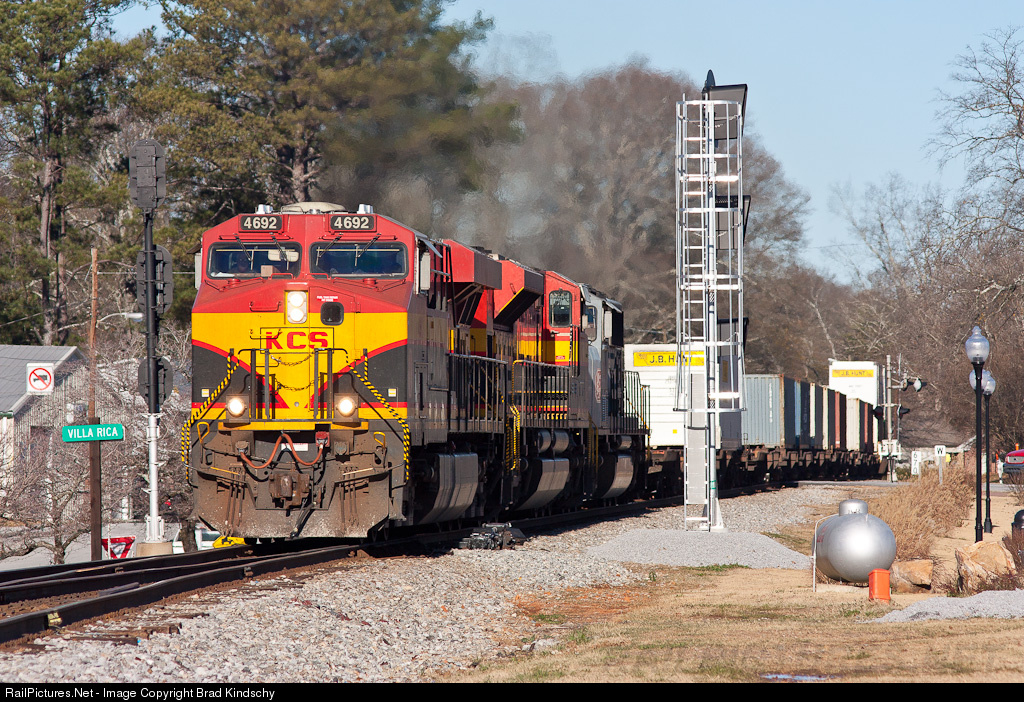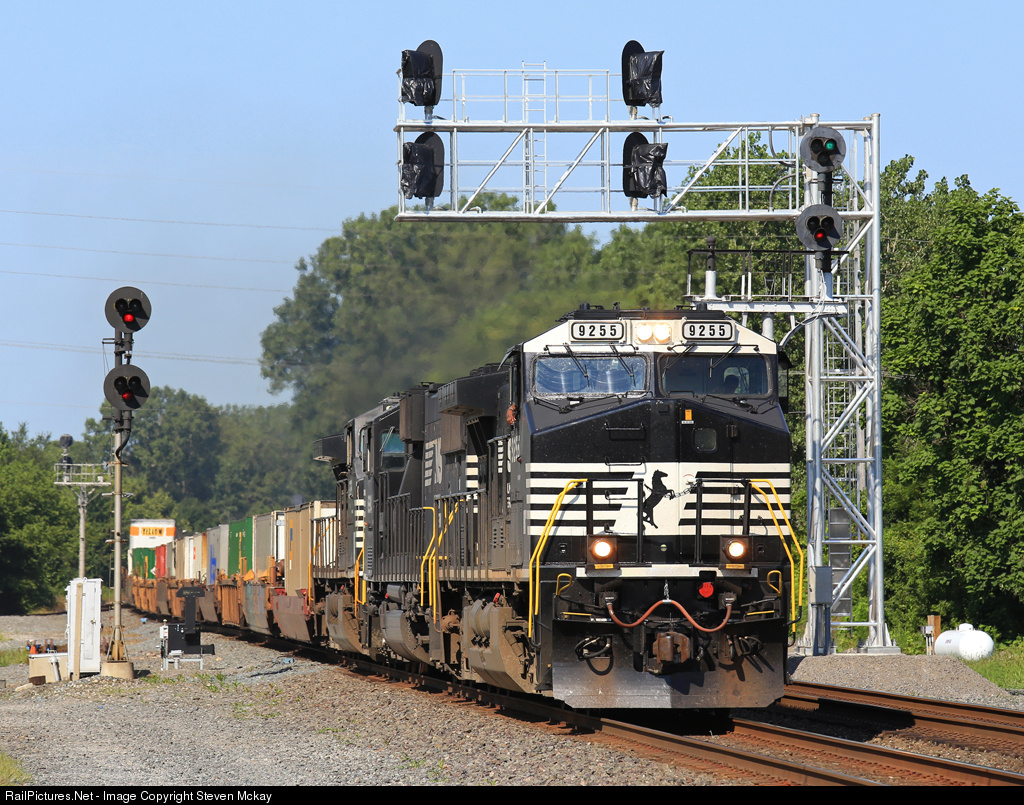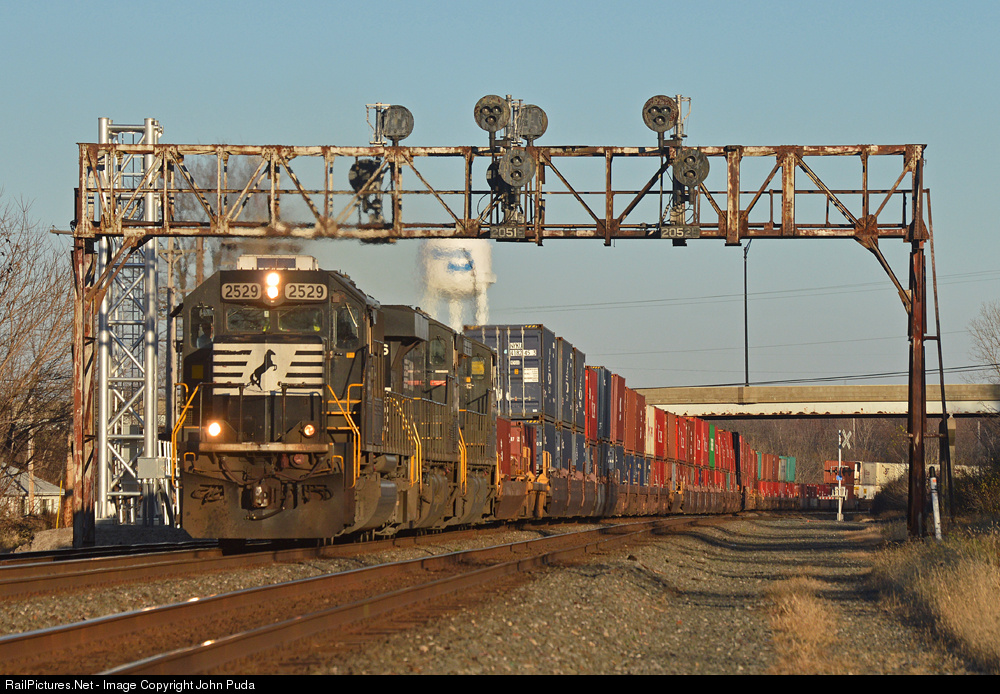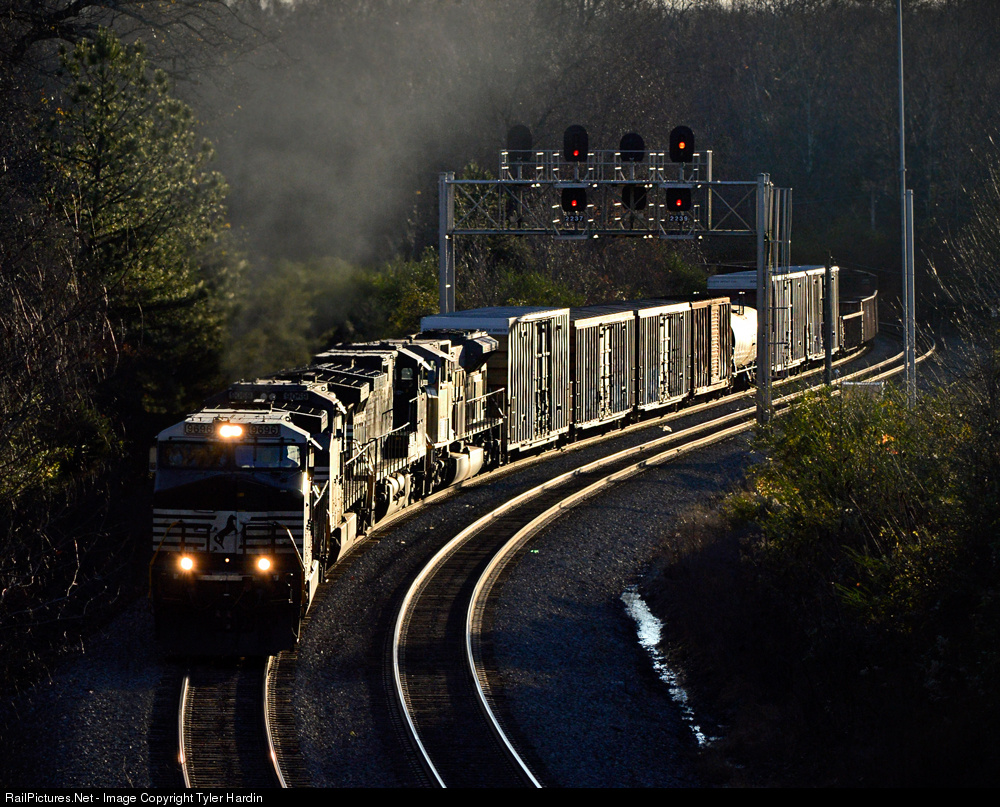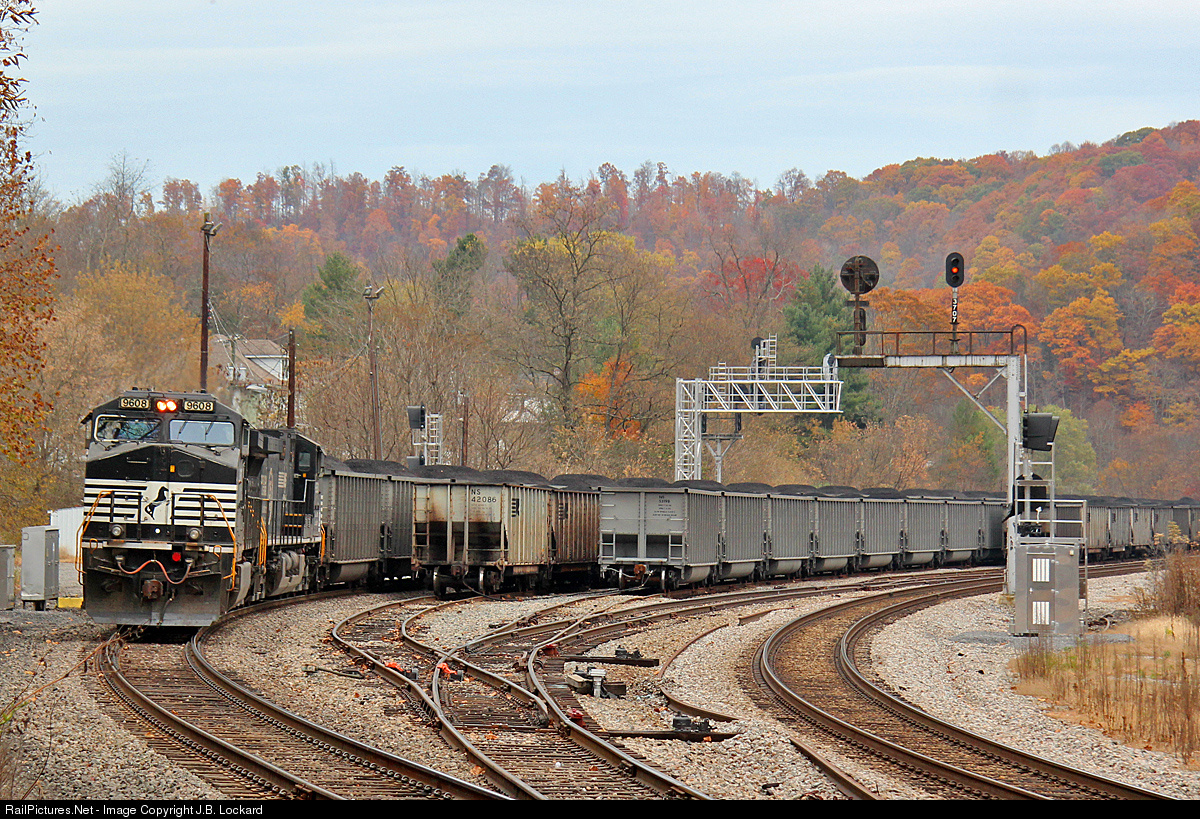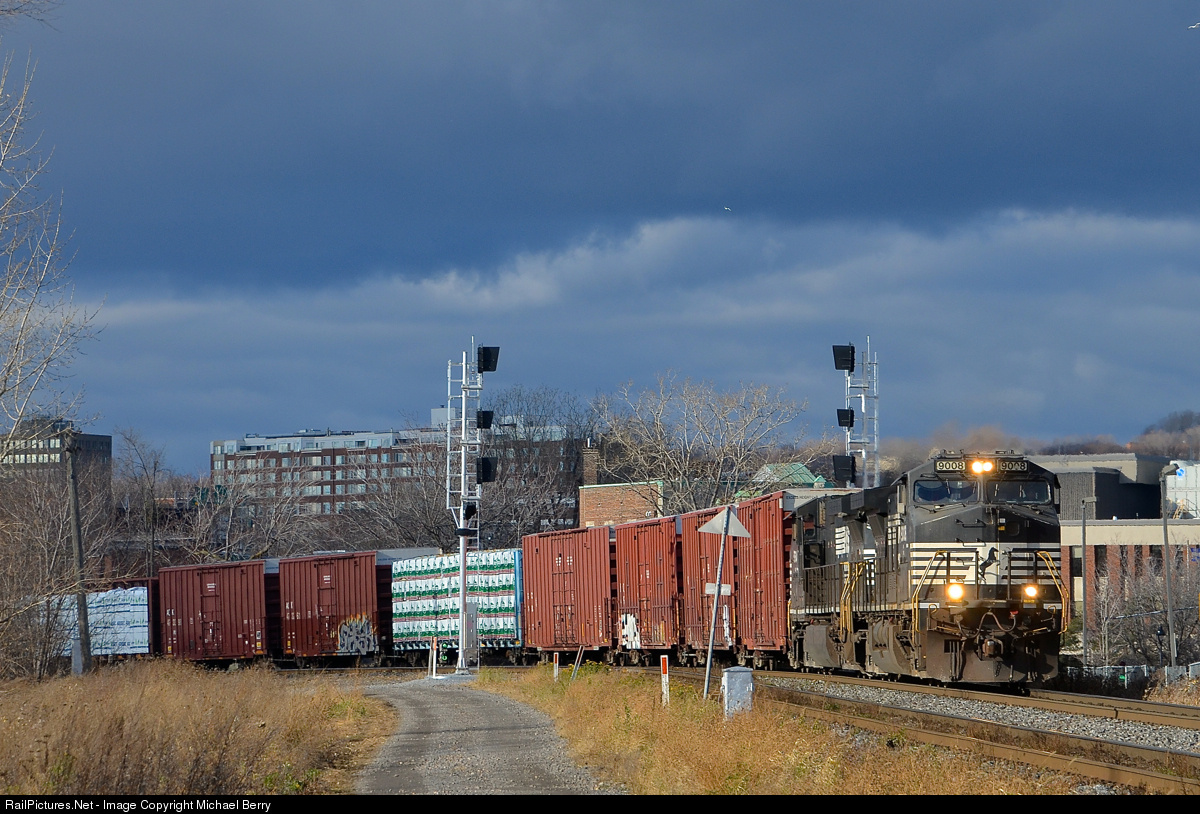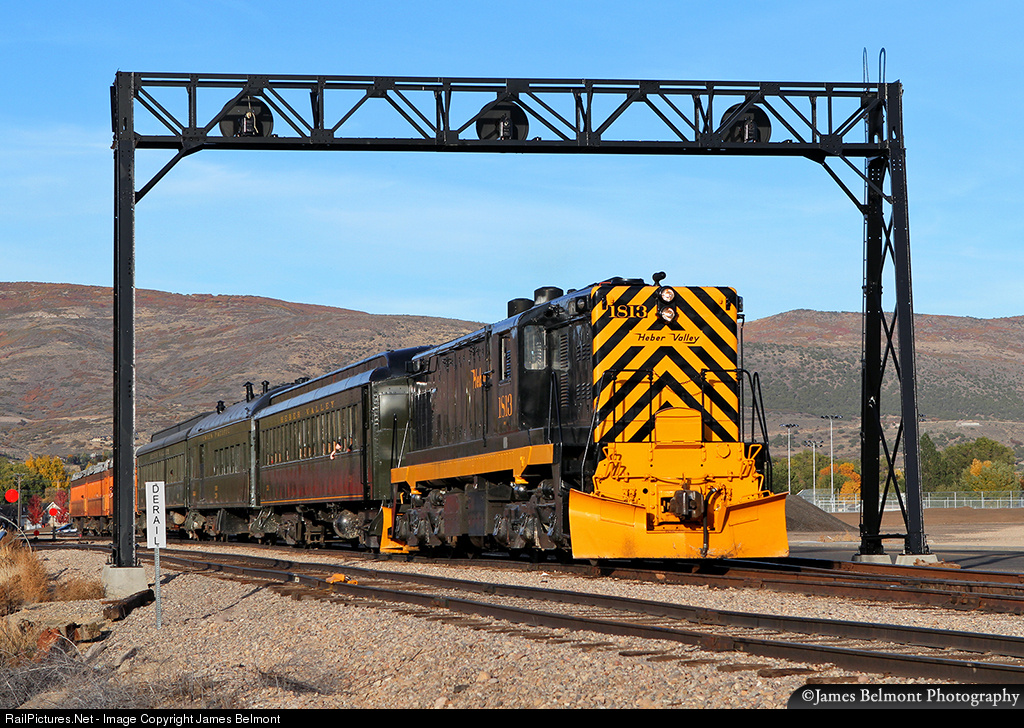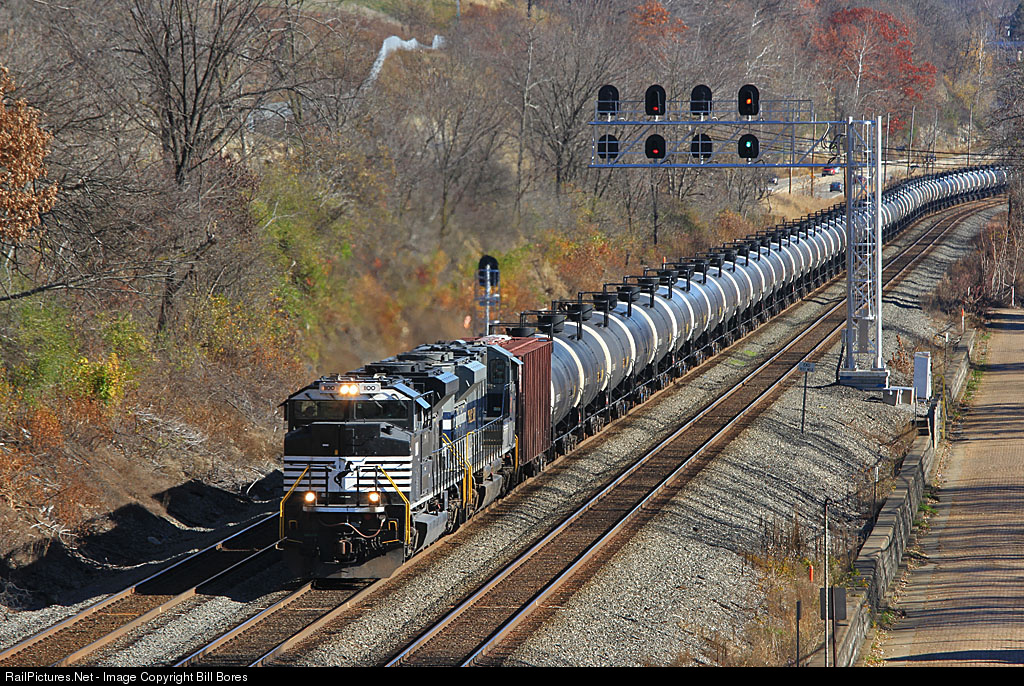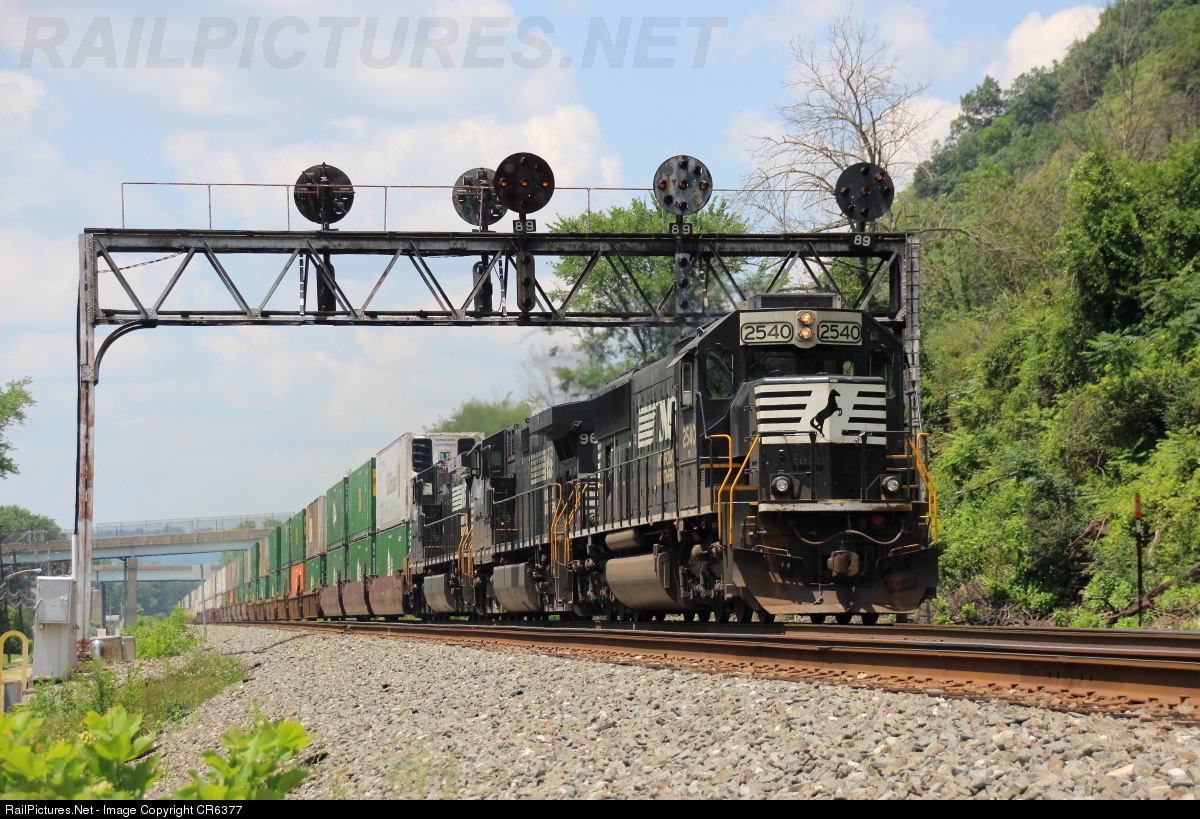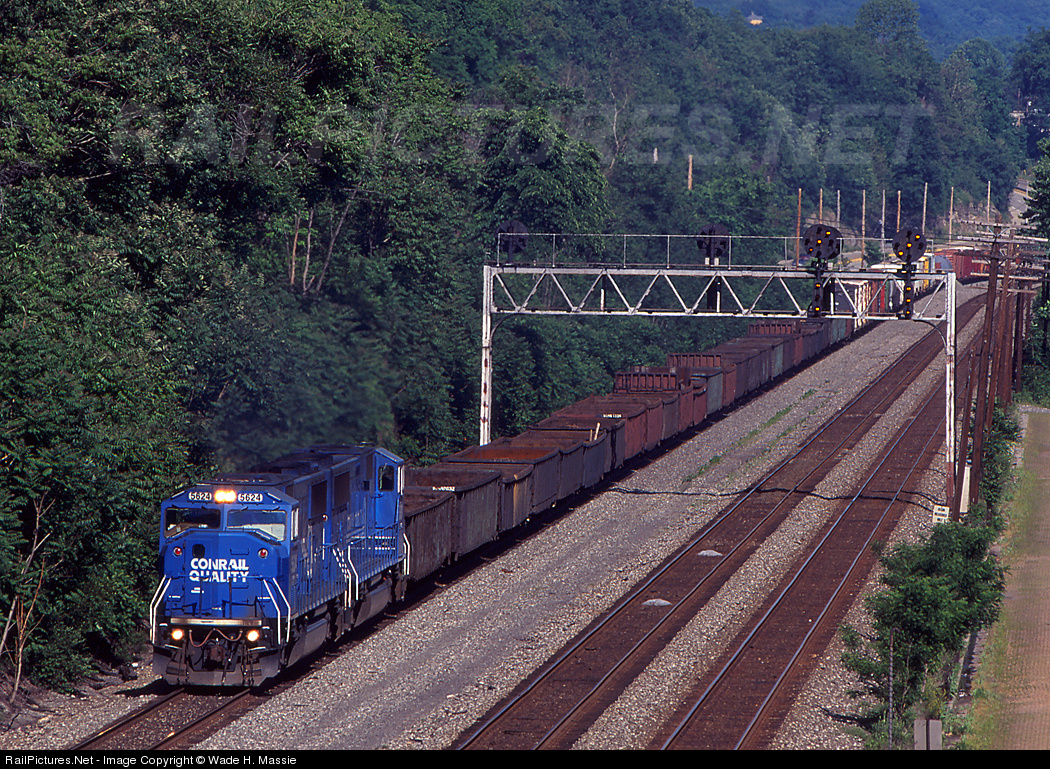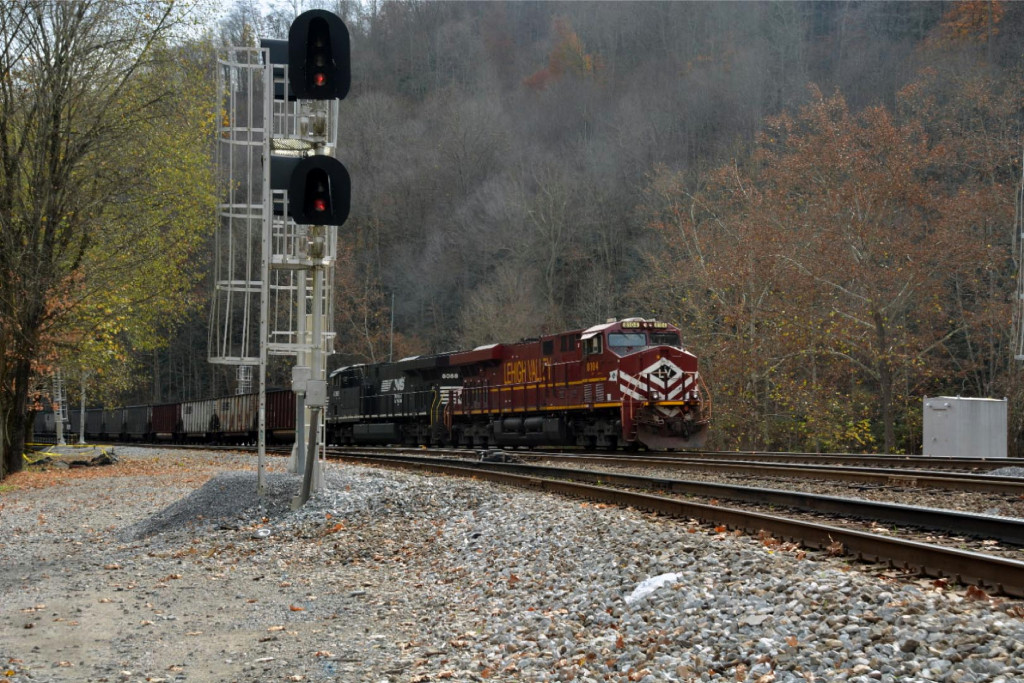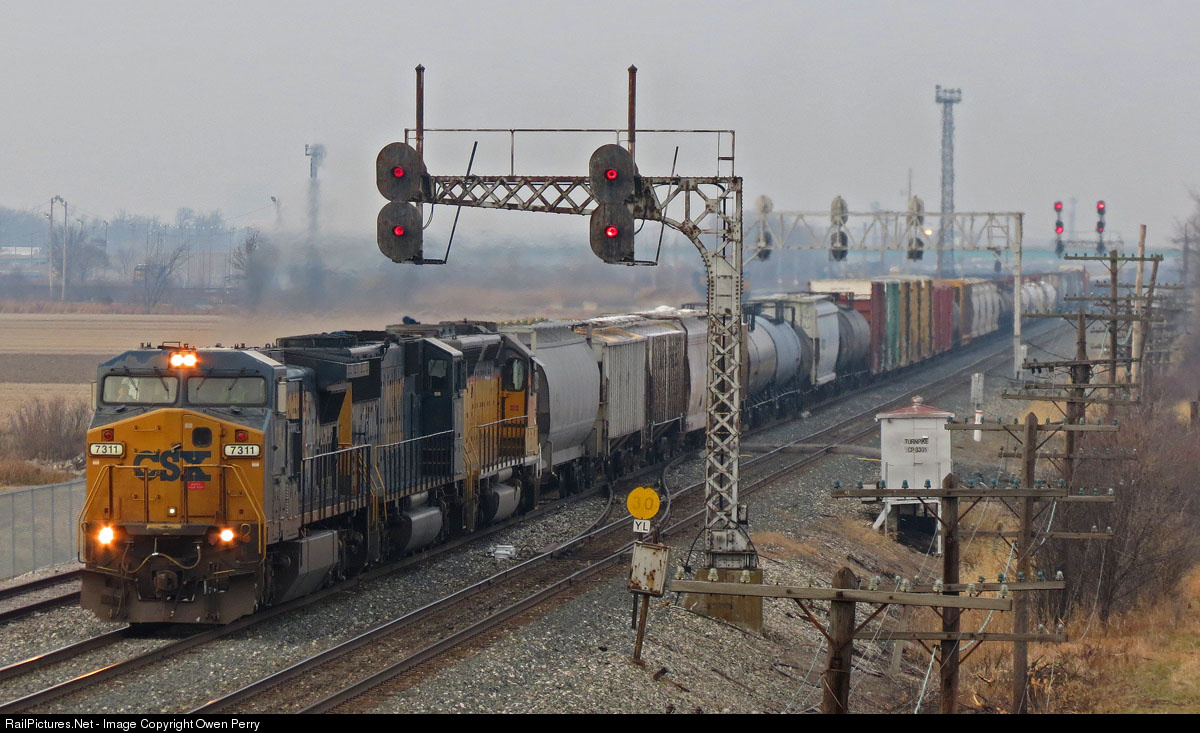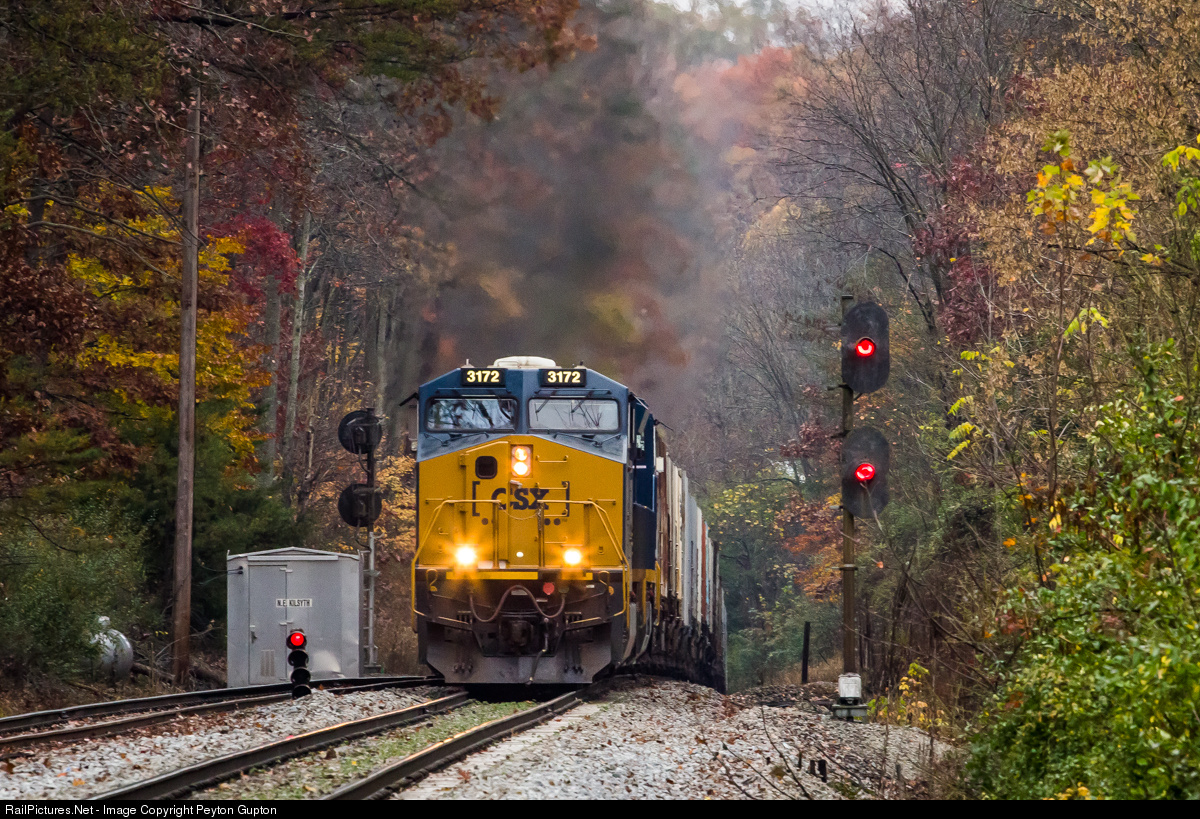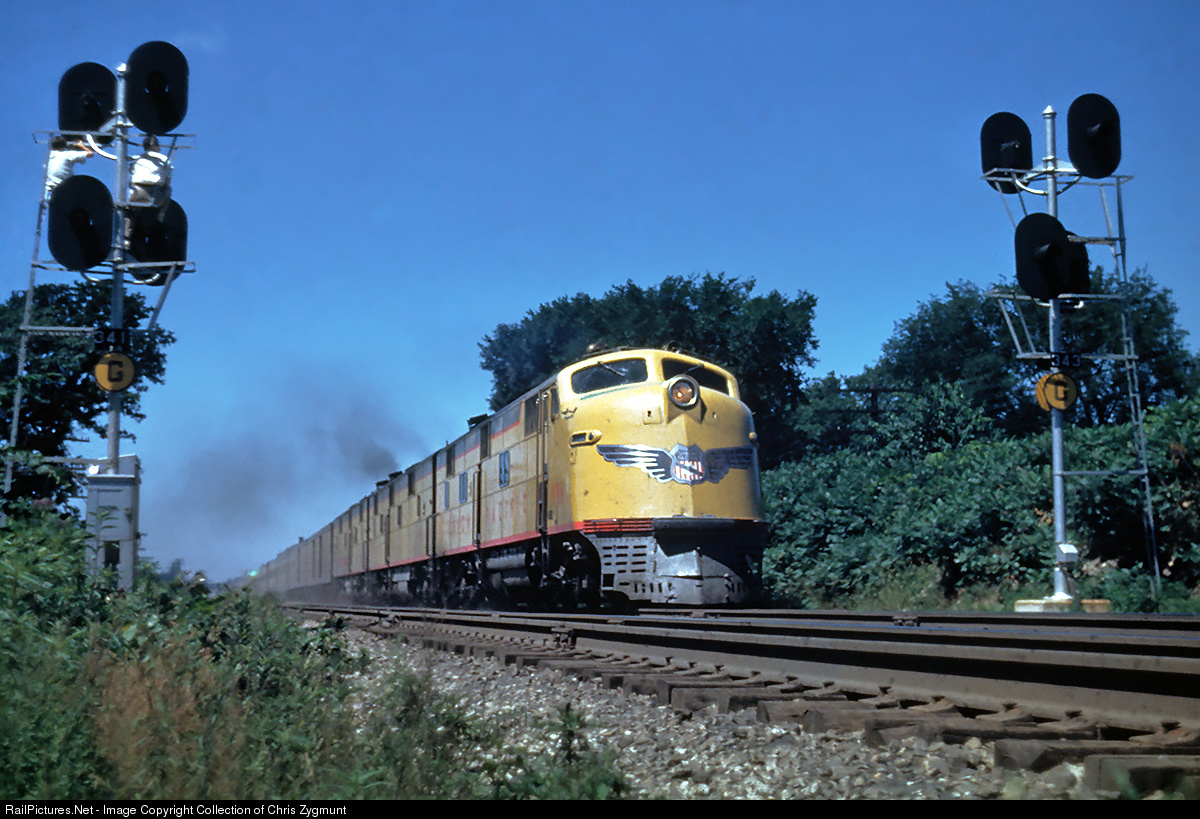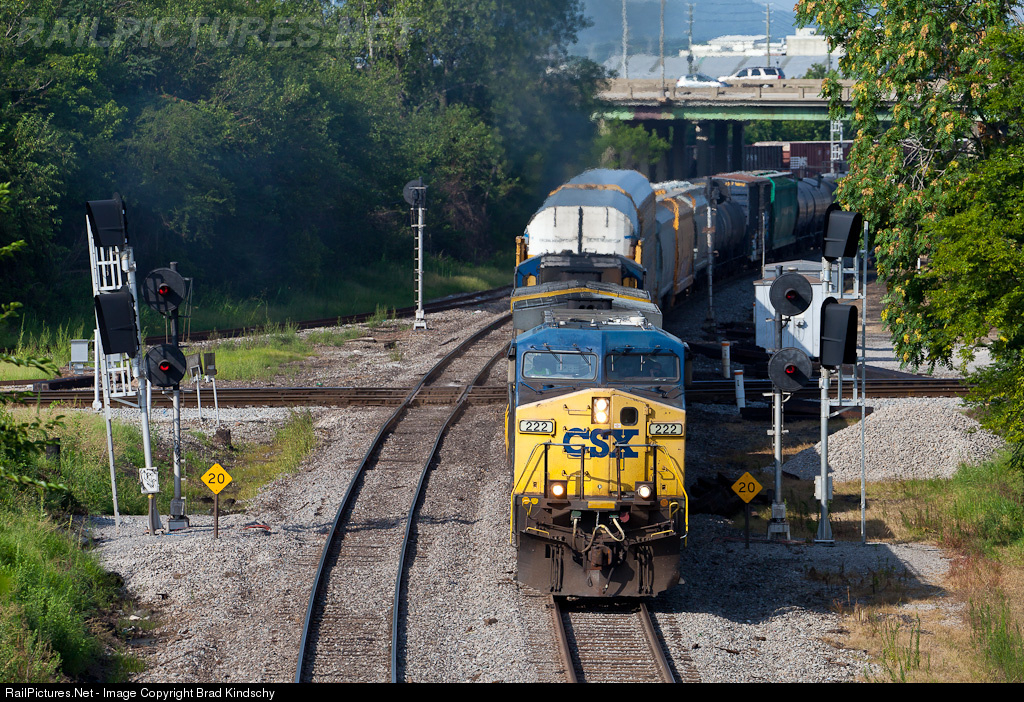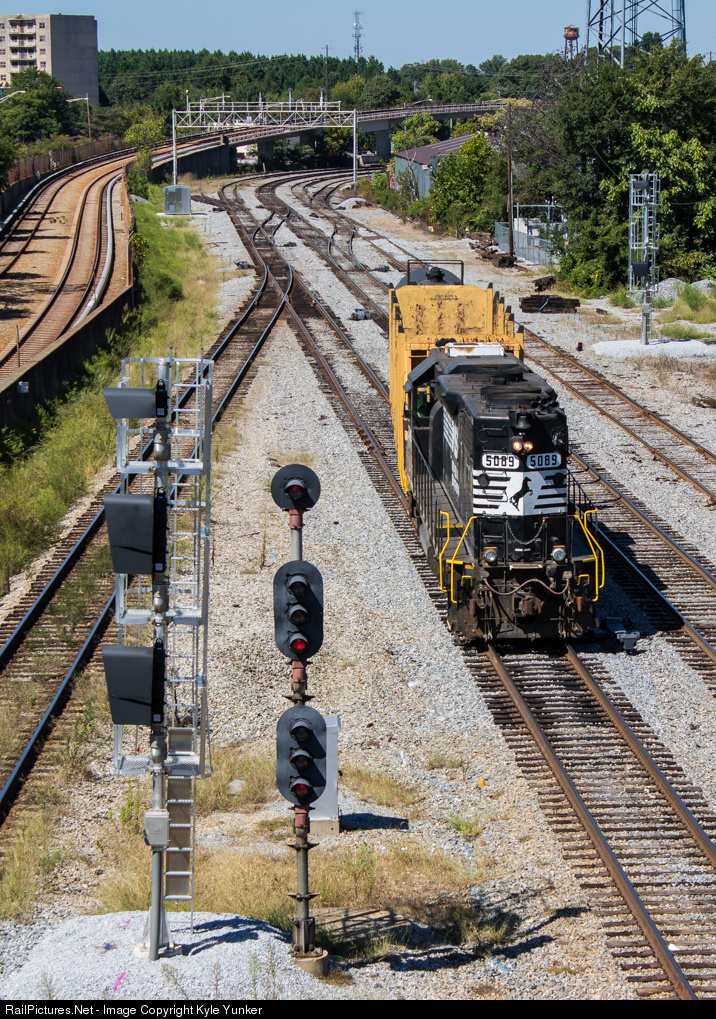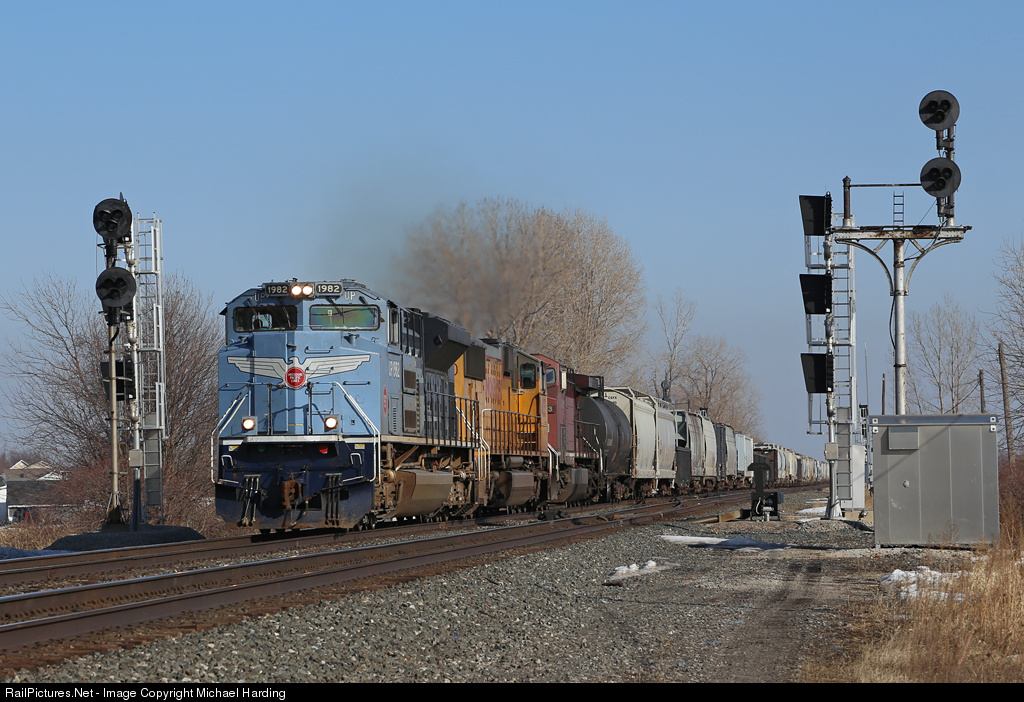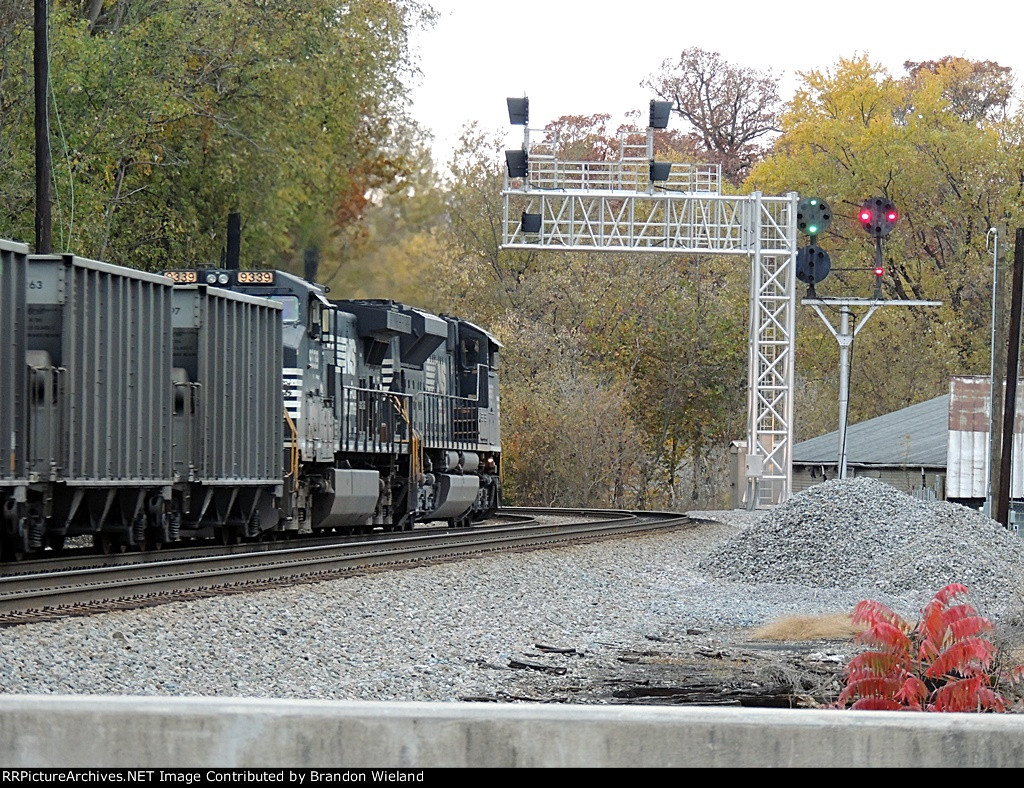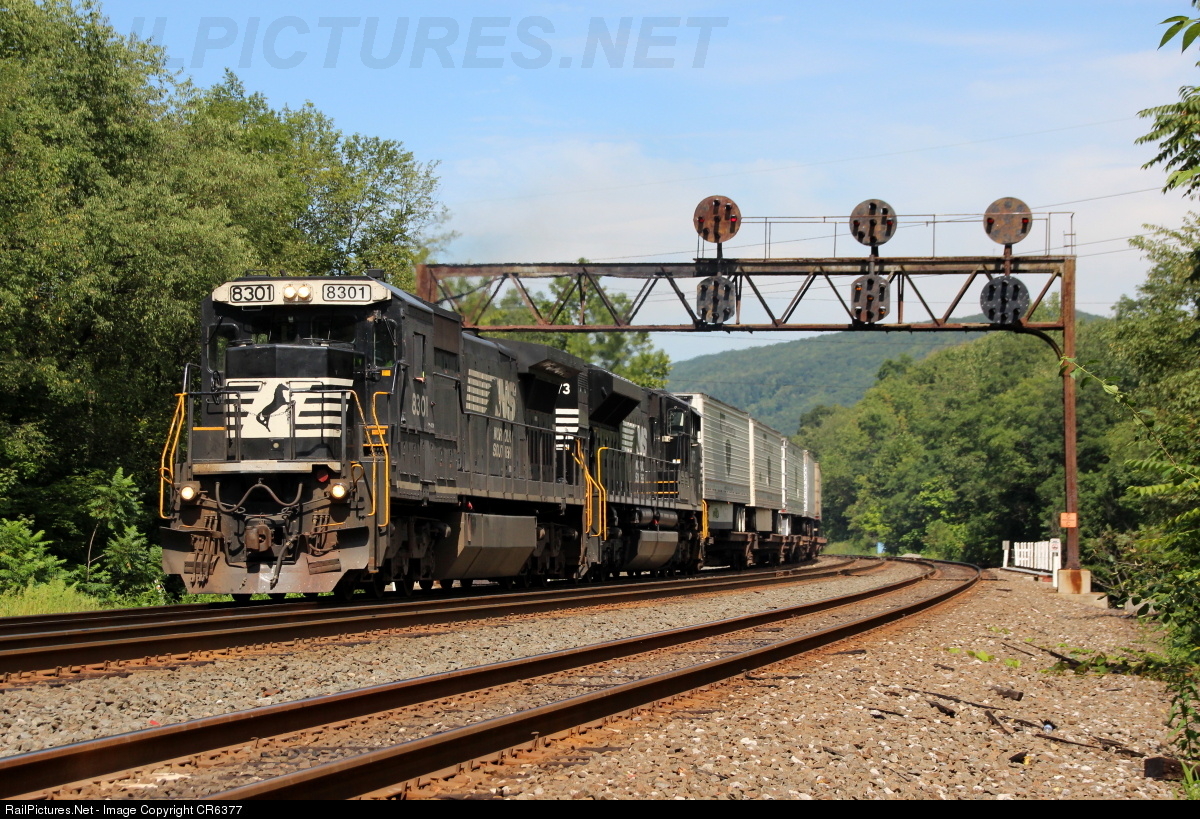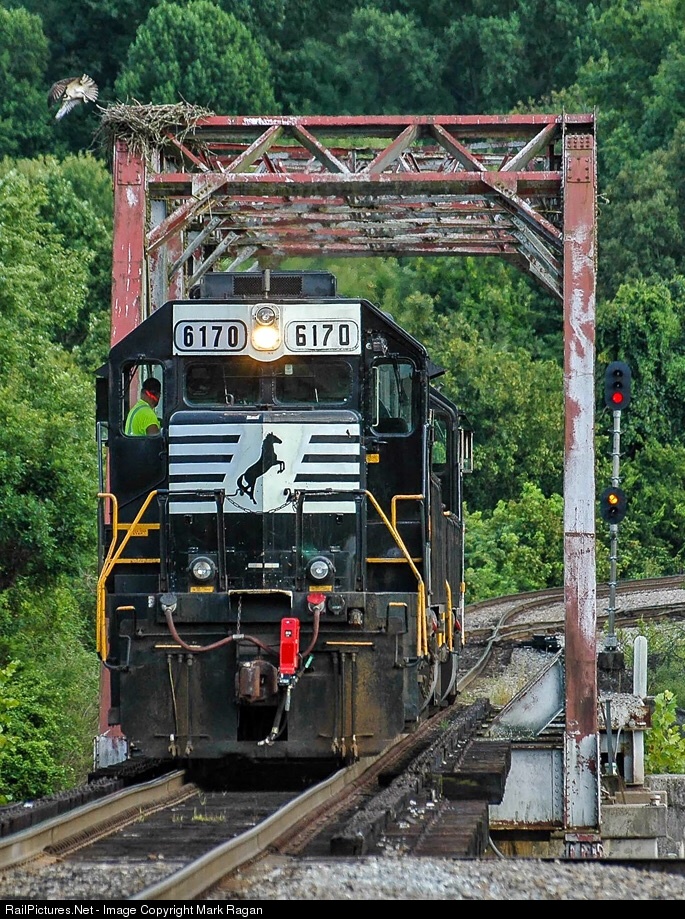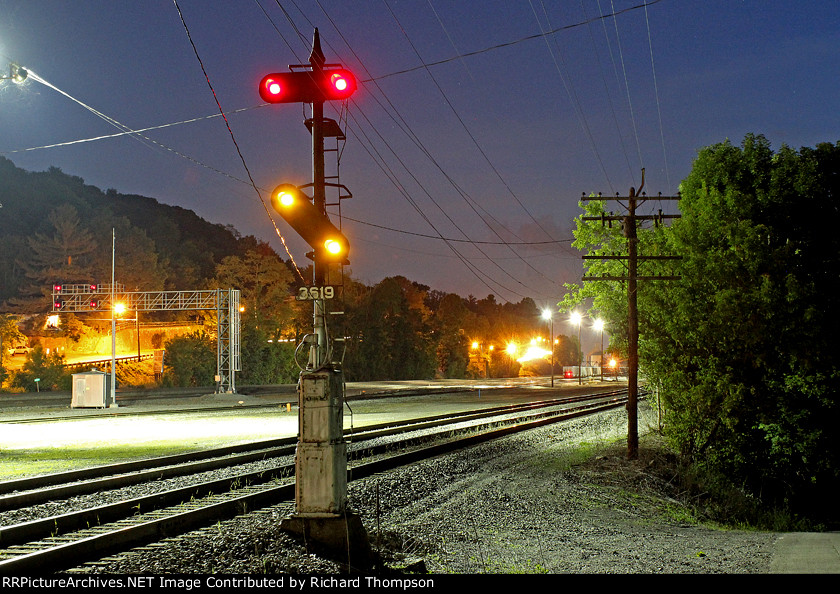On a British signaling forum I frequent, a signaler known as Ian Ives uploaded a number of VHS video tours he made of some London area British Power Signal Boxes (also called Panel Signal Box or PSB) back in the 1990's. For those of you who don't know, a PSB is roughly equivalent to the type of interlocking tower that was largely passed over in North America in the evolution from single interlocking towers to dispatch offices. They are basically what the NYC Subway calls Master Towers.
Popular in the UK between the 1960's and the 1980's, they replaced most of the electro-mechanical interlocking towers in busy urban areas as well as scores of pure mechanical towers. PBS's contained large NX style model boards with light green tiles. Their most high tech feature was automatic train description using small LED or CRT display boxes, which in the 1960's was quite a feat indeed. While well documented pictorially, there are relatively few video records of how these panels were worked so check out these great resources.
If you like these, make sure you visit and/or subscribe to Ian's channel here. If you would like an official tutorial on how these panels worked, you can find it here.
A blog devoted to explaining the ins and outs of North American railroad signaling, past, present and future. This blog seeks to preserve through photo documentation the great diversity and technical ingenuity of 20th century signaling and interlocking hardware and technology. Related topics cover interlocking towers and railroad communications infrastructure.
Note, due to a web hosting failure some of the photos and links may be unavailable.
Search This Blog
Wednesday, December 30, 2015
Saturday, December 19, 2015
Last Stand at MEXICO
With the demise of the stretch of B&O CPL signaling between GREENS SPRING and PATERSON CREEK, MEXICO and WEST HUMP interlockings in the Cumberland Terminal became the last stand for B&O CPL's along the old B&O Main Line. Well now's the time to run to the border and get your photos because CSX has finally started the task of re-signaling the signature interlocking of the Cumberland Terminal/Yard.
I would also expect the interlocking to be rationalized with the many internal dwarf signals either being eliminated or the MEXICO plant being split between 2 or more new logical interlockings. If the re-signaling job at GREENE JCT is an indication it will probably be the former. Anyway, there is a public bridge from which great photos can be taken so if you live anywhere near western Maryland take a road trip before its too late. It's not only your last chance to see a classic B&O interlocking, but possibly your last chance to see CPL's period.
I would also expect the interlocking to be rationalized with the many internal dwarf signals either being eliminated or the MEXICO plant being split between 2 or more new logical interlockings. If the re-signaling job at GREENE JCT is an indication it will probably be the former. Anyway, there is a public bridge from which great photos can be taken so if you live anywhere near western Maryland take a road trip before its too late. It's not only your last chance to see a classic B&O interlocking, but possibly your last chance to see CPL's period.
Sunday, December 13, 2015
RIP Toledo Towers
2015 had not been a good year for out of service interlocking towers on the former Toledo Terminal railroad with three having demolished in the last 12 months. I'm sure for some of you this is old news, but I figured I should publicize the story just in case anyone out there was looking take a road trip.
All three of the demolitions have come at the hand of CSX, which tool control of the route after the Conrail breakup. The former PRR WALBRIDGE tower was located north of the CSX Walbridge Yard, which is the northern end of the old C&O route to the Great Lakes. The tower and it's Model 14 interlocking machine, were retired in 2005 and in its later years was a bit of a strange duck since the PRR route from Toledo to Mansfield had been ripped out decades earlier. Despite the lack of a PRR route, position lights and pneumatic switch machines were in service until the end.
Next up was the late, great STANLEY tower which was located at the junction of the TTR and the north end of the former NY Central Stanley Yard. STANLEY was as much NYC as WALBRIDGE was PRR with a big GRS Model 2 pistol grip interlocking machine. The complicated junction governed access to the dead end Stanley Yard, another creation of Conrail era cuts. This tower only closed in 2008.
Latest to fall was BATES tower, located at the junction of the TTR and the B&O Toledo Branch. Like the other towers this was built and manned by the name brand railroad and the B&O heritage was evident in the style.
Just goes to show that it's always best to take your pictures sooner rather than later because you never know when someone might call in the bulldozers.
All three of the demolitions have come at the hand of CSX, which tool control of the route after the Conrail breakup. The former PRR WALBRIDGE tower was located north of the CSX Walbridge Yard, which is the northern end of the old C&O route to the Great Lakes. The tower and it's Model 14 interlocking machine, were retired in 2005 and in its later years was a bit of a strange duck since the PRR route from Toledo to Mansfield had been ripped out decades earlier. Despite the lack of a PRR route, position lights and pneumatic switch machines were in service until the end.
Next up was the late, great STANLEY tower which was located at the junction of the TTR and the north end of the former NY Central Stanley Yard. STANLEY was as much NYC as WALBRIDGE was PRR with a big GRS Model 2 pistol grip interlocking machine. The complicated junction governed access to the dead end Stanley Yard, another creation of Conrail era cuts. This tower only closed in 2008.
Latest to fall was BATES tower, located at the junction of the TTR and the B&O Toledo Branch. Like the other towers this was built and manned by the name brand railroad and the B&O heritage was evident in the style.
Just goes to show that it's always best to take your pictures sooner rather than later because you never know when someone might call in the bulldozers.
Thursday, December 10, 2015
Post-Thanksgiving News
Tis the season for signaling (or re-signaling) news. I first have something to report from a recent Chicago trip in that the large search-lit UNION AVE plant immediately adjacent to Union Station has been completely re-signaled, including the two "new" semaphore bridges on the curve into Union Station. I was hopeful that the re-signaling effort I had seen last December would have dragged on like the Aurora/Eola effort, but no, they wrapped it up in under 12 months.
Also, new signals were going up at METRA's Blue Island Vermont Street complex. Site of METRA's BLUE ISLAND tower, it is not clear if these are isolated replacements, or a plan to fully re-signal the interlocking and close the tower.
No matter where the 80's Santa Fe searchlights may be, BNSF appears ready to hunt them down like these ones in Texas.
Moving down south, somehow NS keeps finding more Southern Rwy signals to replace such as these near Thomasville.
More signs of waste down in Southern territory with this freshly painted Southern mast signal already flagged for replacement at Villa Rica, GA.
NS had long been replacing signals on the Chicago Line, but here at CP-379 if you look closely, a more modern bracket mast in the opposite direction appears to have been spared. Keep an eye out on that one.
This classic NY Central 4-track gantry in Elyria, OH will not be so lucky.
I finally found an example of NS not throwing away old signal structures on a line in Tennessee. If you look carefully you can see the modern style gantry is one of the first generation varieties. It is also not a cantilever.
With the decline in coal traffic one even wonders why NS is investing in its former N&W region. The mixed PL/CL cantilever is well represented in railfan photography.
We leave off with a little comic relief in the form of a pair of new Darth Vaders near Montreal that are mounted on what have to be some of the tallest signal masts I have ever seen. I'm assuming there's a clearance issue, but I'm not sure what it would be.
 |
| Gone. |
No matter where the 80's Santa Fe searchlights may be, BNSF appears ready to hunt them down like these ones in Texas.
Moving down south, somehow NS keeps finding more Southern Rwy signals to replace such as these near Thomasville.
More signs of waste down in Southern territory with this freshly painted Southern mast signal already flagged for replacement at Villa Rica, GA.
NS had long been replacing signals on the Chicago Line, but here at CP-379 if you look closely, a more modern bracket mast in the opposite direction appears to have been spared. Keep an eye out on that one.
This classic NY Central 4-track gantry in Elyria, OH will not be so lucky.
I finally found an example of NS not throwing away old signal structures on a line in Tennessee. If you look carefully you can see the modern style gantry is one of the first generation varieties. It is also not a cantilever.
With the decline in coal traffic one even wonders why NS is investing in its former N&W region. The mixed PL/CL cantilever is well represented in railfan photography.
We leave off with a little comic relief in the form of a pair of new Darth Vaders near Montreal that are mounted on what have to be some of the tallest signal masts I have ever seen. I'm assuming there's a clearance issue, but I'm not sure what it would be.
Down in CSX land, somehow the C&O main line has still not been completely re-signaled, so that's a bit of a plus, but make sure you act soon as new signals are starting to go up on the last remaining sections.
To finish with a bit of good news, the Heber Valley Railroad acquired a former DRG&W 3-track signal bridge from the UP re-signaling efforts in Utah. The bridge included three GRS searchlight signals.
Thursday, December 3, 2015
Another Icon Falls, Spite Free
I am sad to report that the famous 89 intermediate signal on the former Conrail Fort Wayne line between Pittsburgh and Leetsdale has been replaced by a combination of Darth Vader cantilever and mast. However, instead of this being the result of a spiteful signal department, it is apparently made necessary because a Hergoz MoW crane tore down the origional PRR gantry.
Despite the neutral intentions, this is still a huge loss as the 89 signal was a 3-track PRR PL gantry with a total of 5 signals (track 3 is westbound only). The signal was easily accessible from the adjacent Beaver St.
The even bigger loss come from the way that the blocks were arranged resulted the two eastbound signals displaying Approach Medium in their neutral state. Very cool for photo ops and night shots.
Despite the neutral intentions, this is still a huge loss as the 89 signal was a 3-track PRR PL gantry with a total of 5 signals (track 3 is westbound only). The signal was easily accessible from the adjacent Beaver St.
The even bigger loss come from the way that the blocks were arranged resulted the two eastbound signals displaying Approach Medium in their neutral state. Very cool for photo ops and night shots.
Sunday, November 29, 2015
Hall Disc (aka Banjo) Signals Explained
If a book on North American signaling has a chapter before semaphores that covers stuff like, flag signals, ball signals and tilting targets, Hall "Banjo" signals are often included since they not only look strange, but have also been extinct in the wild since the 1950's. While hardly forgotten to history, most sources tend to focus on how these signals worked mechanically, as opposed to how they were employed functionally. The result is that unless one really digs, you are unlikely to know much more about a Hall banjo signal than it was sort of like a searchlight and sort of like a semaphore. Today I hope to clear up some of the ambiguity surrounding these dinosaurs of North American signaling.
First, how do Banjo signals work? Hall disc signals were one of the first types to work in conjunction with the revolutionary idea of the track circuit. Now I have seen some sources associate Banjo signals with time separation systems, and while they could certainly be used in such a capacity, I am going to focus on their use in automatic blocks. A disc signal (patented ~1869) is basically a searchlight mixed with a semaphore, before the advent of either electric lighting or electric motors. Like semaphores, disc signals have a large day indication (the disc) illuminated by natural light, and a small night indication illuminated by an oil lantern. Like a searchlight, there is a magnetic armature that moves in response to an electric current. When the signal is energized the disc and filter are moved away from the day and night signals changing them from red (or yellow) to clear (or green). If you can't tell where the disc goes, it is moved up to the 10 o'clock position where a small corner can still be observed.
The above photo shows a pair of banjo signals in their "clear" state, the colored disc moved up and out of the way to allow daylight to show through. The two state disc signals could be made to display three signal states be using either a distant-home configuration (as is still popular in Europe) or by mounting two heads on the same mast, one displaying Red and Clear, the other Yellow and Clear. Clear/Clear = Clear, Clear/Yellow = Approach and Red/Yellow = Stop (and Proceed).
This rare color photo shows a Hall disc signal actually doing its job. As you can see the colored discs are actually pretty effective. In a time before electricity, these would be a high tech alternative to mechanically operated semaphores. This also explains why Banjo signals are so often associated with the Reading system. In the late 19th century the Reading was an extremely wealthy railroad and would be able to afford something that would be like CBTC today. As ABS became more prevalent, disc signals fell into the same category as 2-position lower quadrant semaphores,a commodity technology which lasted into the 21st century on some former Southern Pacific lines.
Now it is time to put together the final piece of the puzzle. Above we see an arrangement that was only possible within a fairly narrow sliver of time. Reading Hall disc signals are on the same mast as mechanically operated semaphores. What is going on here? Well the disc signals that are designed to work with low power, primitive track circuits are providing an automatic block signal indication, while the mechanical semaphores are worked from a nearby interlocking tower providing the route protection.
First, how do Banjo signals work? Hall disc signals were one of the first types to work in conjunction with the revolutionary idea of the track circuit. Now I have seen some sources associate Banjo signals with time separation systems, and while they could certainly be used in such a capacity, I am going to focus on their use in automatic blocks. A disc signal (patented ~1869) is basically a searchlight mixed with a semaphore, before the advent of either electric lighting or electric motors. Like semaphores, disc signals have a large day indication (the disc) illuminated by natural light, and a small night indication illuminated by an oil lantern. Like a searchlight, there is a magnetic armature that moves in response to an electric current. When the signal is energized the disc and filter are moved away from the day and night signals changing them from red (or yellow) to clear (or green). If you can't tell where the disc goes, it is moved up to the 10 o'clock position where a small corner can still be observed.
 |
| Some say this is where the term "Clear" signal came from. Argue in the comments. |
The above photo shows a pair of banjo signals in their "clear" state, the colored disc moved up and out of the way to allow daylight to show through. The two state disc signals could be made to display three signal states be using either a distant-home configuration (as is still popular in Europe) or by mounting two heads on the same mast, one displaying Red and Clear, the other Yellow and Clear. Clear/Clear = Clear, Clear/Yellow = Approach and Red/Yellow = Stop (and Proceed).
This rare color photo shows a Hall disc signal actually doing its job. As you can see the colored discs are actually pretty effective. In a time before electricity, these would be a high tech alternative to mechanically operated semaphores. This also explains why Banjo signals are so often associated with the Reading system. In the late 19th century the Reading was an extremely wealthy railroad and would be able to afford something that would be like CBTC today. As ABS became more prevalent, disc signals fell into the same category as 2-position lower quadrant semaphores,a commodity technology which lasted into the 21st century on some former Southern Pacific lines.
Now it is time to put together the final piece of the puzzle. Above we see an arrangement that was only possible within a fairly narrow sliver of time. Reading Hall disc signals are on the same mast as mechanically operated semaphores. What is going on here? Well the disc signals that are designed to work with low power, primitive track circuits are providing an automatic block signal indication, while the mechanical semaphores are worked from a nearby interlocking tower providing the route protection.
Here we see a slightly different scenario where we have two position semaphores for trains moving torwards the camera, the top mounted semaphore for a straight route, the middle semaphore for a diverging route and then the low mounted call-on signal. Then we see the Banjo for trains moving away from the camera as ABS exit signals. The semaphores can be directly controlled from a mechanical lever frame, displaying either Clear, Medium Clear or Restricting, and any ABS modifications given by the Baljo signals when the train departs the interlocking limits. So Medium Approach would be Medium Clear entrance to Approach exit.
I am by no means an expert on all the ways these signals were employed, but I do know that one can't simply dismiss them as proto-searchlights or glorified semaphores as is often the case in so many books and museums. Hall disc signals needs to be understood in the context of a manual block world devoid of even the basic electronics that would revolutionize railway signaling in the 1890's. They were cutting edge technology employed by only by those railroads that could afford to be early adopters.
Tuesday, November 24, 2015
Grand Central Terminal Interlocking Charts
It is often quite difficult to find good technical information on New York City region rail infrastructure due to a combination of security theatre and clever employees knowing that information equates to job security. While some Penn Station information exists on Mark Bej's site, most of what I have on Grand Central is in the form of modern day, paper form track schematics that don't provide much detail and don't provide any historical insight. For this reason I was quite surprised when an unrelated Google search brought up a result containing not only a complete Grand Central interlocking chart representing the late New York Central era, but also the complete set of locking sheets detailing which levers locked what.
Apparently these diagrams have been around since 2004, so sorry if I am a little late to the party, but if I can miss them I figured they could use a bit more promotion. The diagrams themselves are in .pdf format so you'll have to click through since I don't feel like making screenshots. For a quick overview GCT was controlled by 4 interlocking towers, U, A, B and C, each with a GRS Model 2 pistol grip type interlocking machine. There are another pair of listed interlockings, FA and FB, in service on the loop tracks, but these may have been sections of the A and B machines. Like Buffalo Central Station, the New York Central used a common lever numbering strategy across the entire terminal complex. Lever 1 was in U tower, Lever 1099 was in B tower. This is a good tip to remember if you see photos with lever numbers above 400 and think you've found a contender for the world's largest interlocking machine.
While the diagrams don't have any specific information about the interlocking machines as one might find on an official chart, you can derive much of what you need including frame size and the number of switch and signal levers. The diagrams also provide one of the best references as to the layout of GCT itself, better than even some of the official documentation which isn't drawn to scale. Enjoy!
Apparently these diagrams have been around since 2004, so sorry if I am a little late to the party, but if I can miss them I figured they could use a bit more promotion. The diagrams themselves are in .pdf format so you'll have to click through since I don't feel like making screenshots. For a quick overview GCT was controlled by 4 interlocking towers, U, A, B and C, each with a GRS Model 2 pistol grip type interlocking machine. There are another pair of listed interlockings, FA and FB, in service on the loop tracks, but these may have been sections of the A and B machines. Like Buffalo Central Station, the New York Central used a common lever numbering strategy across the entire terminal complex. Lever 1 was in U tower, Lever 1099 was in B tower. This is a good tip to remember if you see photos with lever numbers above 400 and think you've found a contender for the world's largest interlocking machine.
While the diagrams don't have any specific information about the interlocking machines as one might find on an official chart, you can derive much of what you need including frame size and the number of switch and signal levers. The diagrams also provide one of the best references as to the layout of GCT itself, better than even some of the official documentation which isn't drawn to scale. Enjoy!
Tuesday, November 17, 2015
Throw Away Society
So NS is slowly re-signaling it's former N&W lines in Virginia and West Virginia, that's not anything new. What is interesting was something I saw in a pair of photos. At Farm, WV, NS is replacing a number of new NS style Darth Vader masts with...newer NS style Darth Vader masts.
Just goes to show that it doesn't matter how new the signal is, how new the wiring is or even if PTC is being installed or not. It's simply cheaper to install and test in parallel instead of cutting a signal over to a new batch of wires. This is a bit baffling given that new signal installations have terminal boxes at the base to make that sort of changeover cheap and easy, but I guess buying new is cheaper and easier.
Just goes to show that it doesn't matter how new the signal is, how new the wiring is or even if PTC is being installed or not. It's simply cheaper to install and test in parallel instead of cutting a signal over to a new batch of wires. This is a bit baffling given that new signal installations have terminal boxes at the base to make that sort of changeover cheap and easy, but I guess buying new is cheaper and easier.
Wednesday, November 11, 2015
Round Searchlight in an Oval Hole
Everybody knows that part of what makes a searchlight signal a searchlight signal is the round backing. Be it the large target variety that became the Darth Vader signal of its day or the small target variety that tickled the fancy of the Michigan Central and Conrail, the whole reason the backing plate affixed to signals is called a target is because they are round (with the searchlight at the center).
Well some people just have to be different and in the case of searchlights this means the interesting case of the non-round target. Typically associated with the Chicago Northwestern Railway, oval searchlight targets could also be found on certain parts of the CSX system in what I think was the old L&N territory. The reason the CNW is known for them is that this style of searchlight appeared at many famous railfaning locations including TOWER A-2 and JB tower in Chicago, in near classic coaling tower in Nelson, IL and at the Rochelle, IL railfan park.
The oval searchlights were a US&S product, but don't think that US&S only sold this type of searchlight as they were more than happy to sell the default round backing for their H-2 and H-5 searchlight offerings. As far as I can tell, the oval backings were a modification of the backing for N-2 style color light signals as seen here in their intended function.
So why go oval? In the case of the CNW, much of their signaling involved (sometimes sideways) GRS color light signals with a mid-sized oval backing and the oval searchlights would provide a similar look and feel. On the L&N their standard signal was the US&S N-series so again, an oval backing would match. This theory is given credence by this photo of searchlights in former C&O territory near Toledo. The C&O was almost exclusively a user of US&S N-series color lights.
Of course in other situations the oval backing may have been used for clearance or line-of-sight reasons, like this example in the wilds of Tennessee. I can't tell if these are simply chopped down N-2 backings or something with completely different dimensions. I suspect they are simply trimmed down on the sides.
I'll leave you with another photo taken in 1955 that shows the CNW didn't save the oval searchlights just for interlockings. Here we see a UP passenger train rushing past a pair of what look to be brand new CTC signals on the CNW Galena Division between West Chicago and Nelson. All 8 searchlight heads are fitted with oval backing plates. I am uncertain how much CNW territory got these signals and how long they lasted, but it goes to show that oval searchlights can always pop up where you don't expect them.
 |
| Round round, get around, I get a round. |
Well some people just have to be different and in the case of searchlights this means the interesting case of the non-round target. Typically associated with the Chicago Northwestern Railway, oval searchlight targets could also be found on certain parts of the CSX system in what I think was the old L&N territory. The reason the CNW is known for them is that this style of searchlight appeared at many famous railfaning locations including TOWER A-2 and JB tower in Chicago, in near classic coaling tower in Nelson, IL and at the Rochelle, IL railfan park.
 |
| Tower A-2, Clear eastbound on the CNW West Line |
The oval searchlights were a US&S product, but don't think that US&S only sold this type of searchlight as they were more than happy to sell the default round backing for their H-2 and H-5 searchlight offerings. As far as I can tell, the oval backings were a modification of the backing for N-2 style color light signals as seen here in their intended function.
So why go oval? In the case of the CNW, much of their signaling involved (sometimes sideways) GRS color light signals with a mid-sized oval backing and the oval searchlights would provide a similar look and feel. On the L&N their standard signal was the US&S N-series so again, an oval backing would match. This theory is given credence by this photo of searchlights in former C&O territory near Toledo. The C&O was almost exclusively a user of US&S N-series color lights.
Of course in other situations the oval backing may have been used for clearance or line-of-sight reasons, like this example in the wilds of Tennessee. I can't tell if these are simply chopped down N-2 backings or something with completely different dimensions. I suspect they are simply trimmed down on the sides.
I'll leave you with another photo taken in 1955 that shows the CNW didn't save the oval searchlights just for interlockings. Here we see a UP passenger train rushing past a pair of what look to be brand new CTC signals on the CNW Galena Division between West Chicago and Nelson. All 8 searchlight heads are fitted with oval backing plates. I am uncertain how much CNW territory got these signals and how long they lasted, but it goes to show that oval searchlights can always pop up where you don't expect them.
Wednesday, October 28, 2015
Autumn News Highlites
Time for another update on the places you need to go out and get your signal photos now. First up is Birmingham, AL, and I don't mean all the work NS has been carrying out. When it comes to signaling sterilization CSX is never out of the picture and it looks like it feel the need to catch up in that particiular region. The Darths are out in force at the 27th St interlocking.
Over in Atlanta, NS appears to be re-signaling the East Point interlocking, but there is some hope that the far signal bridge might retain it's 1980's Southern style signals (yeah right).
The slow re-signaling of the Chicago Line continues at CP-268.
Further west I received reports of wide scale re signaling between HICK and Porter (CP-483). While this was expected as part of a capacity building project (and the reason that section of MC searchlights held on for so long) what caught me off guard was that CP-502 was also being caught up in the project. Previously part of HICK tower's zone of the control, CP-502 is known for the single IHB track crossing 3 NS tracks at grade.
Anyway, I had assumed that if CP-502 was to be re-signaled it would be in a similar manner to HICK where the old Penn Central signal bridge was retained with new signals thanks to its robust design.
Well if the report is correct the old signal bridges will be replaced. Your Federal infrastructure dollars at work. :-(

Sticking with NS the removal of N&W PL's is continuing in VA and WV. One possible silver lining is the mothballing of the old CSX Clinchfield route which may preserve any remaining classic signaling on the line.
Over in Arkansas I don't like the look of that new signal mast hanging out near some MoPac style tri-light dwarf signals. Not exactly sure what is going on there, but it's worth a signaling alert for sure.
Well I think that's just about everything I have for now. Have a happy Halloween and get out there and take some photos while the fall color is at its peak.
Over in Atlanta, NS appears to be re-signaling the East Point interlocking, but there is some hope that the far signal bridge might retain it's 1980's Southern style signals (yeah right).
The slow re-signaling of the Chicago Line continues at CP-268.
Further west I received reports of wide scale re signaling between HICK and Porter (CP-483). While this was expected as part of a capacity building project (and the reason that section of MC searchlights held on for so long) what caught me off guard was that CP-502 was also being caught up in the project. Previously part of HICK tower's zone of the control, CP-502 is known for the single IHB track crossing 3 NS tracks at grade.
Anyway, I had assumed that if CP-502 was to be re-signaled it would be in a similar manner to HICK where the old Penn Central signal bridge was retained with new signals thanks to its robust design.
Well if the report is correct the old signal bridges will be replaced. Your Federal infrastructure dollars at work. :-(

Sticking with NS the removal of N&W PL's is continuing in VA and WV. One possible silver lining is the mothballing of the old CSX Clinchfield route which may preserve any remaining classic signaling on the line.
Over in Arkansas I don't like the look of that new signal mast hanging out near some MoPac style tri-light dwarf signals. Not exactly sure what is going on there, but it's worth a signaling alert for sure.
Well I think that's just about everything I have for now. Have a happy Halloween and get out there and take some photos while the fall color is at its peak.
Wednesday, October 21, 2015
Caught on Camera - Episode 7: Restricting
Ah Restricting, not the rarest of signal indications, but definitely special in certain circumstances, especially in the now vanishing instance of running against the current of traffic in Rule 251 ABS territory. I had a number of CoC candidates featuring the Restricting indication in my queue so I decided to throw them up in their own episode.
Here we see an interesting situation at the old 67TH ST tower on the Metra Electric division. This outbound train is wrong railing on the South Chicago Branch and just passed the 114 signal, displaying a Restricting indication. The logic of the old GRS Model 5 interlocking machine is such that the signal will continue to display even if there is a train occupying the track.
Of course US&S would never stand for such signaling shortcuts. You can bet when a train passed the 60R signal displaying Restricting at THORN interlocking, it would drop to Stop.
Sometimes a Restricting was just an inexpensive way to signal low speed crossovers, as seen here at Metra's TOWER A-5 and UP's KEDZIE interlockings.
Here we see the eastbound PRR PL signal gantry at CP-GRAY with the track 1 signal displaying a Restricting indication. More often than not freight railroads do a pretty good job keeping signals at Stop so this one must be fleeted for a wave of eastbound movements.
This photo illustrates the use of lowest yellow Restricting with the middle middle head. Here a light engine move is heading into the yard at Clinton. TN as an osprey takes flight.
Moving into N&W territory I managed to catch a route lined for the yard in Shenandoah, VA.
Yards are a pretty popular place to catch Restricting indications, like this one at EAST BRUNSWICK as displayed on a B&O CPL.
Here is another example of a train being signaled into a yard, this time at Collier, VA on the old SCL A-Line. This example shows how the Seaboard would need to find space on the US&S N-3 elephant ears for the awkward 4th color.
Finally in Bluefield, WV we see an automatic N&W style position light with a fixed Restricting indication. Simple in operation, but stunning in the right light.
Here we see an interesting situation at the old 67TH ST tower on the Metra Electric division. This outbound train is wrong railing on the South Chicago Branch and just passed the 114 signal, displaying a Restricting indication. The logic of the old GRS Model 5 interlocking machine is such that the signal will continue to display even if there is a train occupying the track.
Of course US&S would never stand for such signaling shortcuts. You can bet when a train passed the 60R signal displaying Restricting at THORN interlocking, it would drop to Stop.
Sometimes a Restricting was just an inexpensive way to signal low speed crossovers, as seen here at Metra's TOWER A-5 and UP's KEDZIE interlockings.
Here we see the eastbound PRR PL signal gantry at CP-GRAY with the track 1 signal displaying a Restricting indication. More often than not freight railroads do a pretty good job keeping signals at Stop so this one must be fleeted for a wave of eastbound movements.
This photo illustrates the use of lowest yellow Restricting with the middle middle head. Here a light engine move is heading into the yard at Clinton. TN as an osprey takes flight.
Moving into N&W territory I managed to catch a route lined for the yard in Shenandoah, VA.
Yards are a pretty popular place to catch Restricting indications, like this one at EAST BRUNSWICK as displayed on a B&O CPL.
Here is another example of a train being signaled into a yard, this time at Collier, VA on the old SCL A-Line. This example shows how the Seaboard would need to find space on the US&S N-3 elephant ears for the awkward 4th color.
Finally in Bluefield, WV we see an automatic N&W style position light with a fixed Restricting indication. Simple in operation, but stunning in the right light.
Labels:
Caught on Camera,
CSX,
interlocking,
METRA,
NS,
signaling,
signals
Subscribe to:
Posts (Atom)


